U.S. is Rushing to Keep Up with Russian and Chinese Efforts to Develop Highly Autonomous Robots for Military Operations

The Pentagon is Nervous about Russian and Chinese Killer Robots
Deputy defense secretary: Russia is preparing for all-robot fighting unitsDecember 14, 2015
DefenseOne.com - The Pentagon is rushing to keep up with Russian and Chinese efforts to develop highly autonomous robots — in Russia’s case, ones capable of independently carrying out military operations, deputy defense secretary Robert Work told the Center for New American Century forum today.
Work quoted the Defense Science Board’s summer study on autonomy and AI, which said that the human race stands at “an inflection point” in the development of artificial intelligence. Different nations, he noted, are reacting in very different ways.
“We know that China is already investing heavily in robotics and autonomy, and the Russian Chief of General Staff [Valery Vasilevich] Gerasimov recently said that the Russian military is preparing to fight on a roboticized battlefield and he said, and I quote, ‘In the near future, it is possible that a complete roboticized unit will be created capable of independently conducting military operations.’”What does an adversary robot military look like? Perhaps like some future version of the Armata T-14 from Russian defense contractor Uralvagonzavod. In October, the company’s deputy director general, Vyacheslav Khalitov, told Russian media,
“We will be able to show prototypes in 1.5 to 2 years. We are gradually moving away from crewed machines.”But who needs a tank without people? Why not just little trucks with guns? In March 2014, the Russian Strategic Missile Forces announced it would deploy armed sentry robots that could select and destroy targets with no human in or on the loop at five missile installations.
Or tomorrow’s robot enemy army could look like one of these armed ground robots from China’s Harbin Institute of Technology, unveiled at the Beijing 2015 World Robot Conference. The robots can wield anti-tank weapons, grenade launchers, or assault rifles.
Work spoke broadly of the U.S. military need to “dominate” in machine learning and artificial intelligence. It’s a key feature of the so-called offset strategy, a Pentagon research initiative meant to secure technological advantage over adversaries (‘offsetting’ similar gains by those nations.) But, said Work, that the way the United States goes about designing and especially employing AI is distinct and more human reliant than Russia or China.
“I will make a hypothesis: that authoritarian regimes who believe people are weaknesses … that they can not be trusted, they will naturally gravitate toward totally automated solutions. Why do I know that? Because that is exactly the way the Soviets conceived of their reconnaissance strike complex. It was going to be completely automated. We believe that the advantage we have as we start this competition is our people,” he said.Work’s hypothesis echoes, somewhat, the concerns of Gill Pratt, a former roboticist with the Defense Advanced Research Projects Agency, or DARPA, who expressed concerns about endowing ground robots with the autonomous, lethal capabilities in a conversation with Defense One during the summer.
Pratt said that humans would be better than machines, for some years to come, at deciding whether to fire a weapon.
“The chance of making a military situation much worse by having a machine autonomously make a mistake outweighs the benefit,” he said.
This Week, China Introduced Us to Robots Who Come From the Future
November 26, 2015Gizmodo - When it comes to futuristic androids, Asia’s got the scene on lockdown, especially China, Japan, and Korea. Right now, the World Robot Exhibition in Beijing is being held from November 23 to 25. Here are some scenes from the show, as well as what our electronic, bipedal friends will look like in the near future.
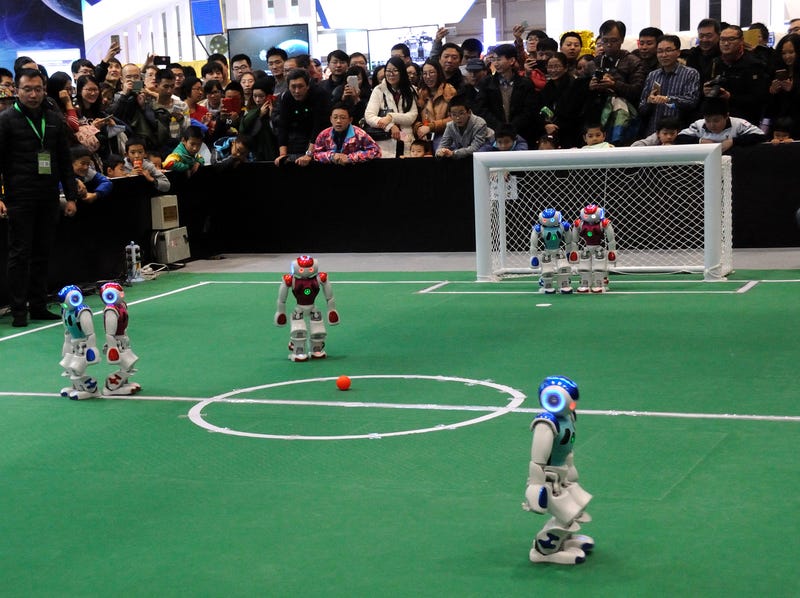
Soccer-playing robots. Humanoid robots that move and talk like humans are becoming more common in East Asia, with examples like Pepper leading the way.
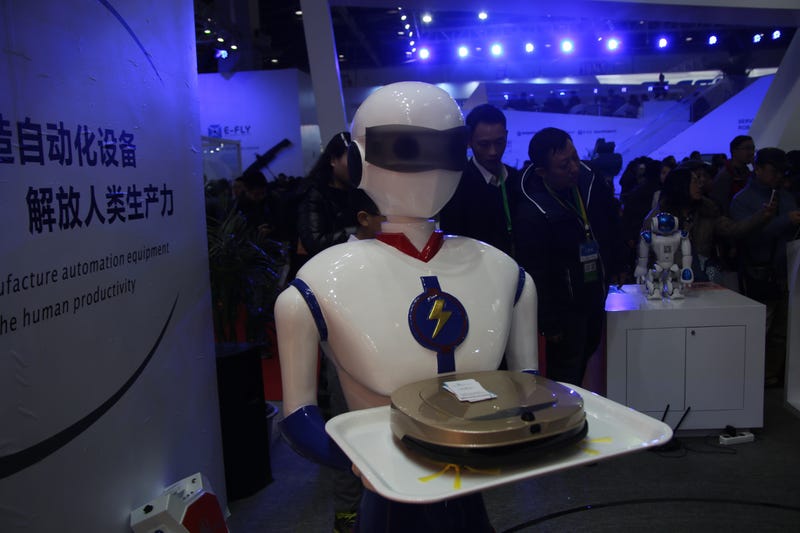
Robots like this one are designed to live and work alongside humans, not necessarily replace them. In Japan, robotic staff is beginning to fill shops, hotels, and even airports and can complement human workers by doing tasks they can’t or won’t do, like lifting very heavy objects.
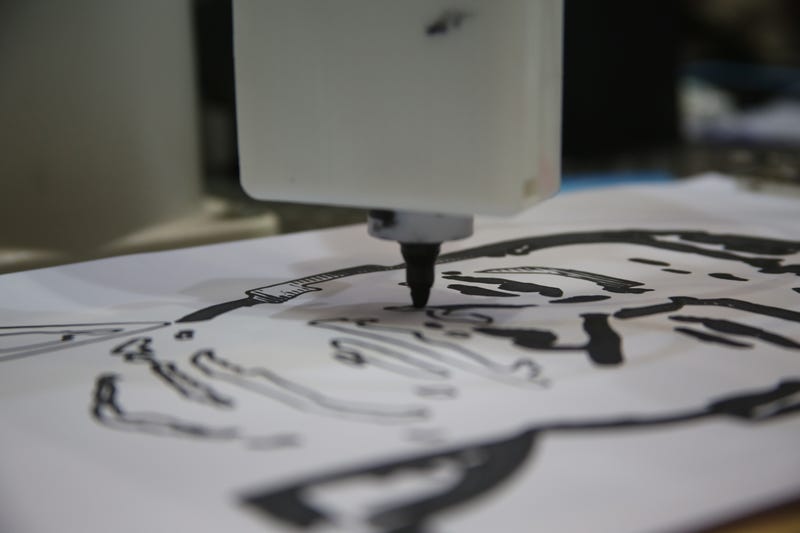
Painting robots, like the one seen above, are also becoming more common. One of the challenges for roboticists is engineering robots that can not only store and recall lots of data and solve logical problems, but to also grant robots adaptive learning that allows them creativity and to adapt to changing situations on the fly.
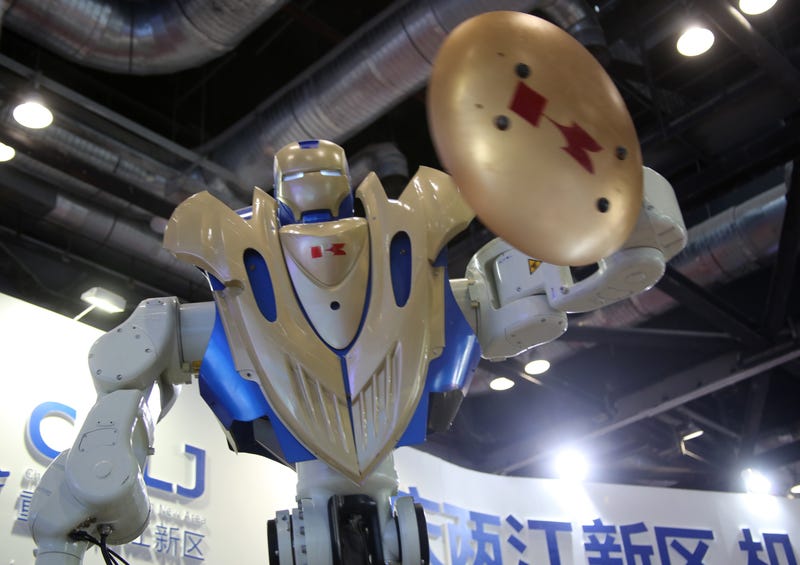
Some newer robots in China, maybe like this dancing one seen here, have been known to look like they’re some kind of comic book superhero—or villain.

Japanese android Geminoid F also made an appearance. She’s the robotic actress with her own IMDb page that’s starring a new movie that debuted in Tokyo earlier this fall. Credit: Hong Kong Free Press YouTube.
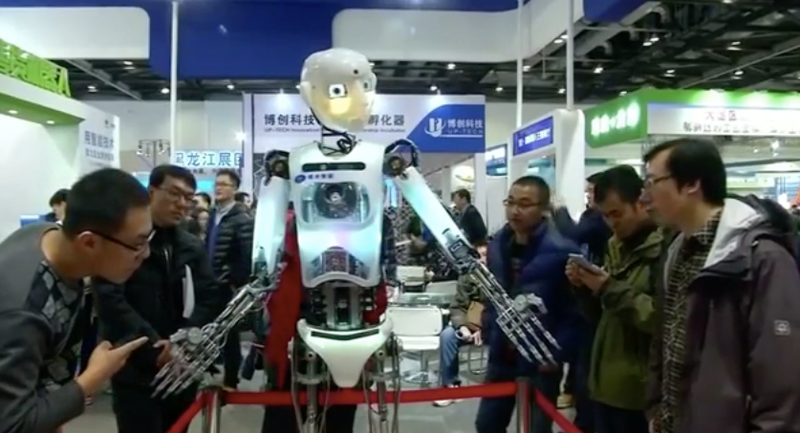
Like Pepper, this puppy can sense your emotions by reading your facial expressions, and can even tell if you’re a man or a woman, your age, how happy you are, and can copy your actions. It’s apparently designed to be used as an events host or emcee. [Via BBC]
All images from ChinaFotoPress through Getty Images, or via Hong Kong Free Press YouTube.



No comments:
Post a Comment